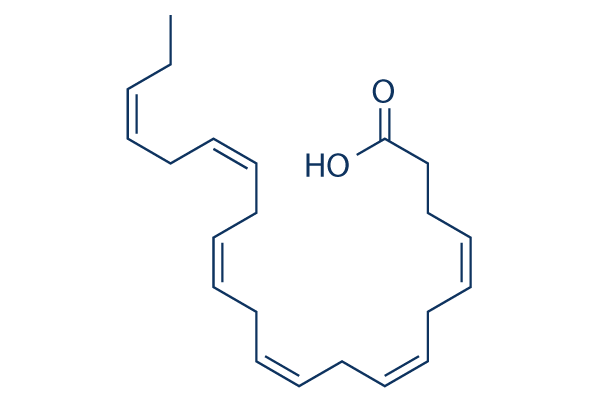Docosahexaenoic acid (DHA) is an omega-3 fatty acid found in oily fish like salmon and anchovies. It is also present in krill and some fortified foods.
Omega-3 fatty acids are polyunsaturated fats with three or more double bonds. There are several types of omega-3 fatty acids, but research focuses on alpha-linolenic acid (ALA), eicosapentaenoic acid (EPA) and DHA.
Overview
Docosahexaenoic acid (DHA) is a type of omega-3 fat that may improve many aspects of your health, from the brain to your heart. It is found in fish, such as salmon and anchovies, and other seafoods. It is also available as a supplement. Getting enough DHA may reduce your risk of cardiovascular disease, and can help with depression and anxiety. It may also improve your vision and mood. It is important for fetal development and pregnancy, and helps infants learn and grow.
DHA is a long-chain polyunsaturated fatty acid with six (hexa-) double bonds. It is found mostly in the membranes of cells throughout the body. It is also an important component of the retina in the eye and the brain. It can be produced by the body, but is usually obtained through diet. DHA is also added to some formulas for infants to support brain and visual development.
It can be found in oily fish, as well as in some plant sources including chia seeds, walnuts, flaxseeds, Brussel sprouts, and algal oil. It can also be made by converting the omega-3 fatty acid eicosapentaenoic acid (EPA) through a series of desaturation and elongation reactions.
Researchers have shown that dietary DHA and its epoxide metabolites can decrease systolic blood pressure, diminish renal inflammation, and reduce the formation of MCP-1 and ACE-2 in angiotensin II dependent hypertension. This effect is likely due to their anti-inflammatory properties. These metabolites can also inhibit the formation of prostaglandins and leukotrienes, which are known to induce hypertension. In addition, epoxides of EPA and DHA can inhibit platelet adhesion to endothelium, which is a common cause of arterial clotting disorders.

Key Characteristics
Docosahexaenoic acid (DHA) is the major omega-3 long-chain polyunsaturated fatty acid that accumulates in significant amounts in human brain and retina. Studies have shown that DHA has multiple health benefits, ranging from the importance of DHA for fetal development and prevention of preterm birth to its role in improving cognition and eye health in adults and seniors. It is also important in preventing cardiovascular disease, attenuating depression and bipolar disorder, and reducing inflammation in the body.
DHA is considered a lipid mediator and it can be enzymatically oxidized to generate mono-, di- and tri-hydroxy DHA, epoxy-DHA and oxo-DHA. It can also be modified by free radical non-enzymatic processes to form a number of neuroprostanes, the most abundant of which is F4-neuroprostanes. These metabolites can be further synthesised into prostaglandins and thromboxane A2 releasing substances (thromoquinone, asymmetrical cytidine-ringed oxylipins) with the resulting compounds having both pro- and anti-inflammatory effects.
A key metabolic pathway for DHA synthesis is the eicosapentaenoic acid (EPA)-docosahexaenoic acyltransferase (PGHS-2). This enzyme catalyzes the mono-dioxygenation of EPA to yield PGH3 and 11R-hydroxyeicosapentaenoic acetic acid (11R-HEPE), which are converted to DHA via further oxidation to form hexaenoic acid.
Omega-3 fatty acids are found in oily fish, plant-based oils such as flax seeds, walnuts and Brussel sprouts and dietary supplements like fish oil. They are referred to as n-3 because they contain three carbon atoms in their chains and two cis double bonds, while omega-6 fatty acids have six carbon atoms in the chain and four cis double bonds. The n-3 fatty acids are converted to EPA and DHA from their dietary essential precursor, alpha-linolenic acid (18:3n-3), through a series of desaturation and elongation reactions.
Health Benefits
Docosahexaenoic acid (DHA) is a long-chain polyunsaturated fatty acid of the omega-3 (n-3) family. It has a 22-carbon chain and six cis double bonds. In humans, it is produced only in small amounts from its dietary essential precursor alpha-linolenic acid (ALA, 18:3n-3) by elongation and a series of desaturation reactions or obtained from fish oil or plant sources that have been converted to ALA such as flaxseed, walnuts, canola oil, and sardines. DHA and its metabolites have been shown to have neuroprotective, anti-depressant, anti-inflammatory, and antiaging effects.
DHA is concentrated in high levels in the brain and eyes and is a major building block of cell membranes. It is important for fetal brain development, cognitive function, vision, and other vital body processes. DHA is also associated with reduced risk of heart disease, high blood triglycerides, and inflammation in the joints. The health benefits of DHA extend across all ages, from the need for DHA during pregnancy and early childhood to the need for adequate DHA intakes throughout adulthood.
Another benefit of DHA is its impact on reducing blood pressure through the actions of its epoxide metabolites. These epoxides have been shown to reduce the production of prostaglandins, which increase blood pressure, and to decrease markers of renal inflammation in people with angiotensin II dependent hypertension. The epoxides of DHA have also been shown to prevent atherosclerosis and to improve heart function in those with existing cardiovascular disease. In addition, epoxides of DHA can help to maintain normal blood sugar levels in diabetics by increasing insulin sensitivity and decreasing glycemic response. This is because epoxides of DHA reduce the synthesis and release of triglycerides from cells, while improving sensitivity to insulin.
Importance in Life Stages
Omega-3 fatty acids are important for all cells in your body, but they’re especially critical during pregnancy and the first two years of life. They’re also involved in normal brain development. Your body can’t make omega-3 fatty acids, so it’s important to get them in your diet.
DHA is an omega-3 fatty acid with a 22-carbon chain and six cis double bonds, and it’s found in many types of fish, including salmon, trout, and tuna. It is also available in certain dietary supplements, such as those made from algae.
Studies have shown that DHA is an important component of brain tissue. The brain needs large amounts of DHA to function properly. In addition, DHA is important for the eyes and may help reduce your risk of eye diseases such as age-related macular degeneration and retinopathy.
In early childhood, brain growth is rapid, and DHA is present in a significant proportion of total brain-based fatty acids. DHA starts accumulating in the fetal brain during the third trimester and continues to accumulate throughout infancy.
Researchers have also found that DHA is associated with cognitive performance in school-age children. However, this association is weaker than expected and could be explained by differences in methods for measuring dietary intake or blood levels of DHA.
Research suggests that omega-3 fatty acids, such as docosahexaenoic acid (DHA), have many benefits for the human body, including healthy skin and a reduced risk of heart disease. In particular, DHA has been shown to reduce triglyceride levels in the blood. It is also believed to play a role in the prevention and treatment of depression, anxiety, attention deficit hyperactivity disorder, and bipolar disorder.
